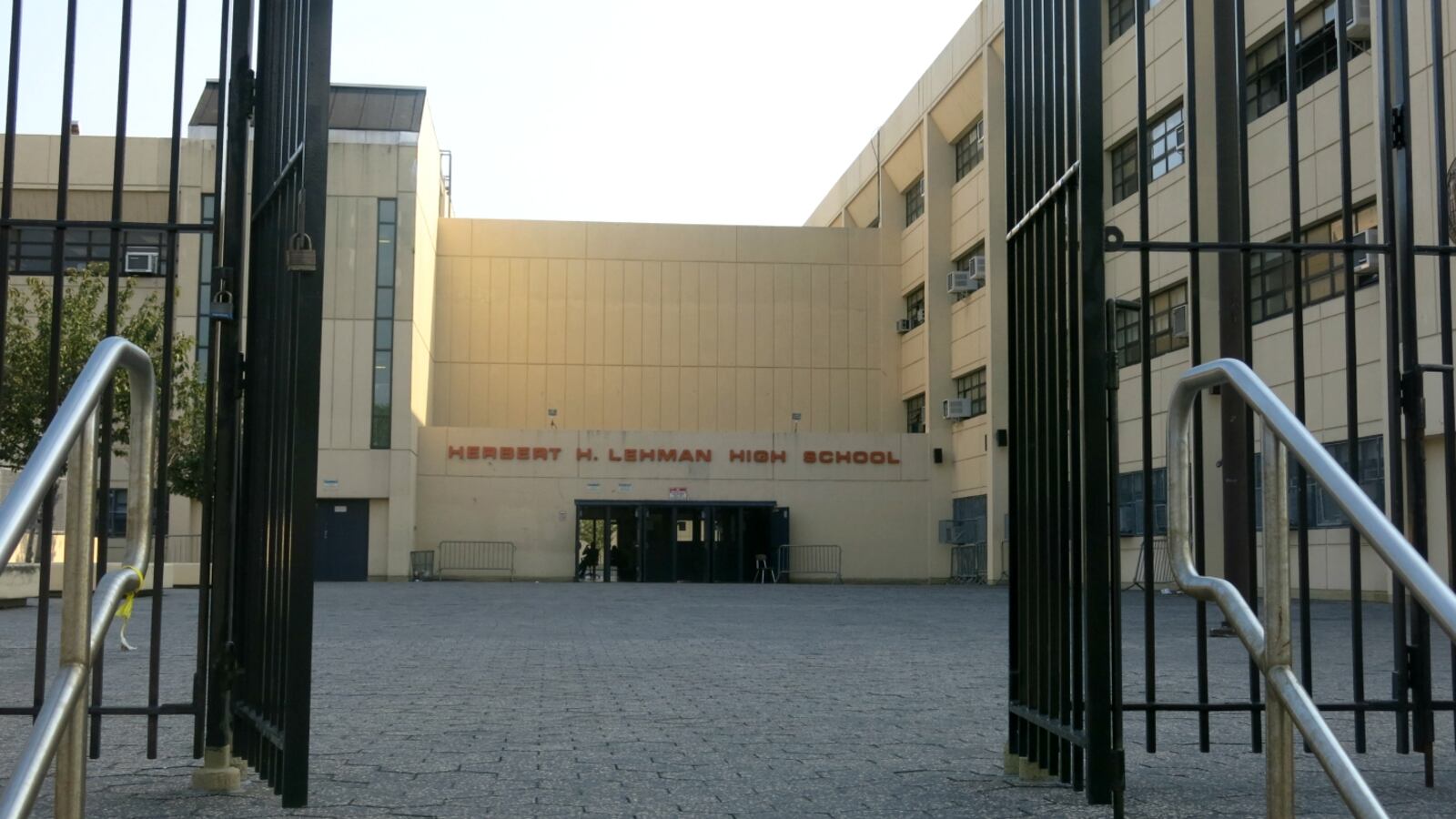A group of New York City schools that faced the possibility of sanctions from the state passed a key milestone after they made gains on standardized tests and graduation rates, officials said Tuesday.
The 17 schools showed enough evidence of progress on their improvement plans to no longer require additional state oversight — or face the possibility of outside takeover or closure.
But while notable that these schools have shown “overall evidence” of progress, clearing this hurdle doesn’t mean the schools have mounted a complete comeback.
Two city schools didn’t make two-thirds of their “demonstrable improvement goals,” which include metrics such as graduation rates, test scores, and measures of college readiness, and the state ordered the city to identify why and offer extra monitoring.
Additionally, all 17 schools are still technically under receivership even though they have passed a requirement to lose that status, said Jeanne Beattie, a spokeswoman for the state department of education. Schools that will retain their receivership status will be announced early next year, Beattie said.
Even though the schools have escaped additional state oversight, they might not be out of the woods just yet. All of them are also part of Mayor Bill de Blasio’s Renewal turnaround program, and the mayor has said the fate of those schools, which have previously been subject to closure, will be decided later this year.
“We must acknowledge that in many of these schools, levels of performance remain low and much more intensive efforts must be undertaken to ensure that more students reach higher levels of achievement,” State Education Commissioner MaryEllen Elia said in a press release.
Every school in the receivership program had been among the bottom 5 percent of schools across the state for multiple years, and while the state has said that they have all made sufficient progress, many continue to struggle.
DeWitt Clinton, a long struggling high school that forced the entire staff to reapply for their jobs last year, met just 58 percent of its goals, though state officials still said that was enough to avoid extra oversight. Last year, 44 percent of students were considered chronically absent, and just 42 percent were considered “college ready.” It’s graduation rate increased nearly 20 percentage points, though, to 69 percent.
At M.S. 301 in the Bronx, a school that met 82 percent of its state goals, test scores have increased significantly in recent years but are still well below city averages. Just 11 percent of students are considered proficient in math, and 14 percent in reading, according to state tests.
Most receivership schools have not previously faced dramatic intervention from the state. To date, three schools have faced closure through the receivership program. That includes a middle school in the Bronx that the city closed in 2017 and replaced with a new school.
Some critics have complained that the state’s education department has let too many schools off the hook; the state has steadily whittled down the 62 city schools that were brought into the receivership program in 2015, arguing they have made enough progress. Now, just 17 city schools remain. One of the schools, P.S. 92 in the Bronx, was closed by the city in June.
Which schools are considered low-performing by the state could change, as the state rolls out a new framework for making those decisions under the federal Every Student Succeeds Act. The new framework for identifying struggling schools is meant to place less emphasis on test scores in favor of measures such as how often students are suspended, chronic absenteeism or how prepared they are for life after high school.
Schools are also supposed to receive more support when they’re identified as low-performing, instead of pursuing more dramatic changes like replacing staff. The state is expected to announce a new round of low-performing schools under the new framework next month.
The new system also places more emphasis how well English language learners are progressing toward English proficiency and the results of science and social studies exams.
The state education department’s decision to reduce the number of receivership schools has previously frustrated Gov. Andrew Cuomo. But Cuomo, who pushed for the Receivership law as a more aggressive intervention for struggling schools, has warmed to the approach favored by Mayor de Blasio and the state’s unions: infusing low-performing schools with resources instead of shutting them down. Cuomo’s office did not immediately respond to a request for comment.
Here’s the list of the 17 New York City schools that made “demonstrable improvement” according to the state:
Bronx:
M.S. 301 Paul L Dunbar
The Hunts Point School
Herbert H Lehman High School
The Bronx Mathematics Preparatory School
Longwood Preparatory Academy
Bronx High School of Business
I.S. 339
I.S. 219 New Venture School
P.S. 085 Great Expectations
Fordham Leadership Academy
DeWitt Clinton High School
Brooklyn:
Juan Morel Campos Secondary School
Boys and Girls High School
P.S. 165 Ida Posner
Queens:
Flushing High School
August Martin High School
P.S. 111 Jacob Blackwell

